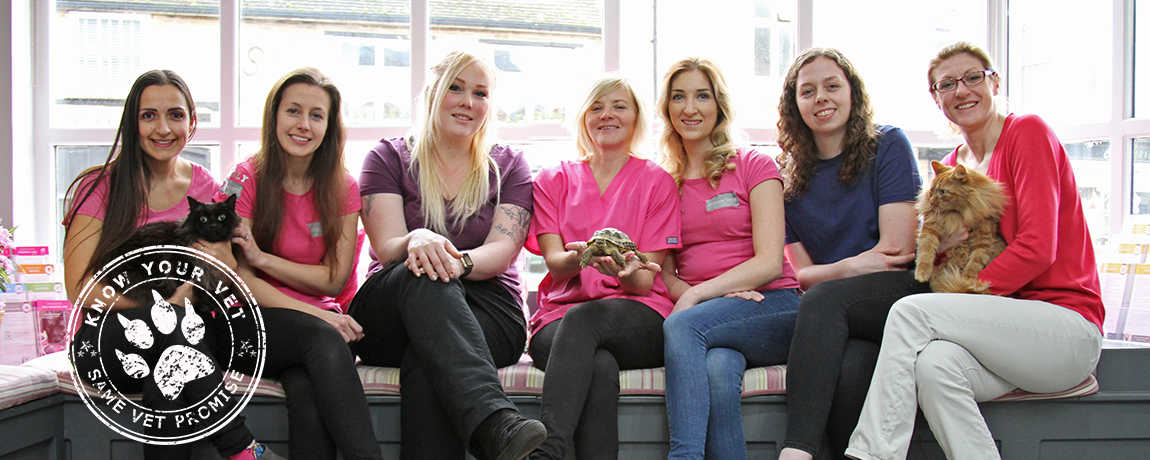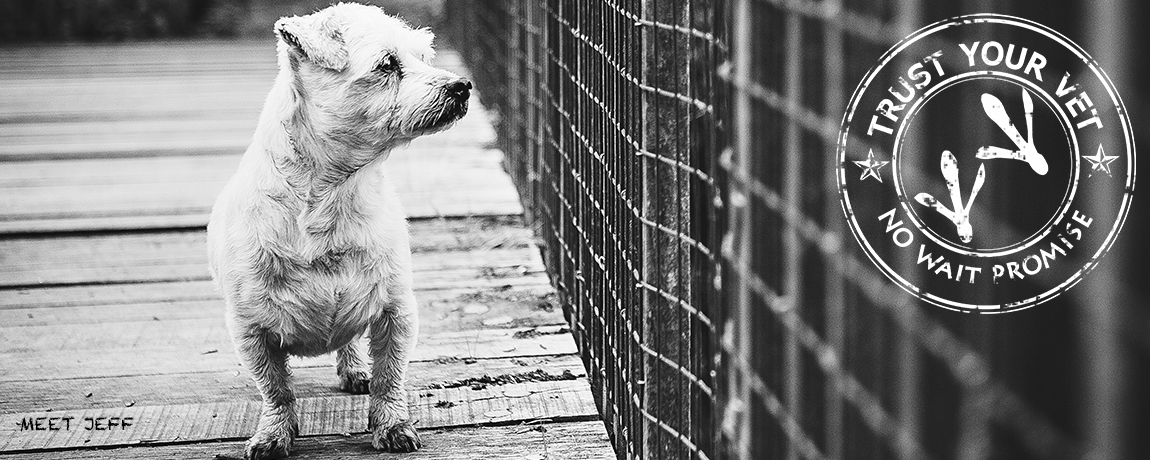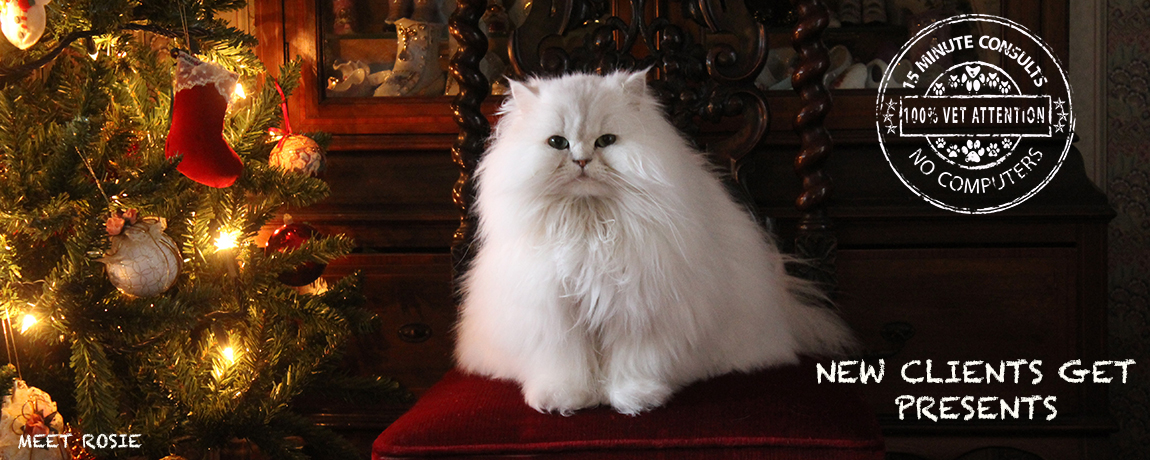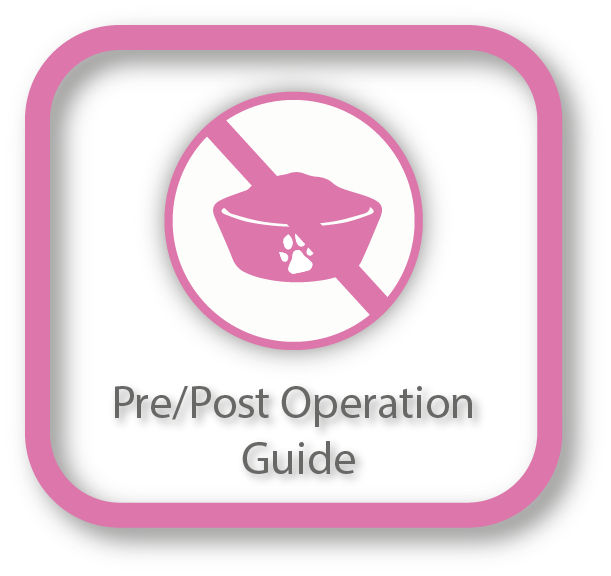Neutering


Dogs
Why neuter?What happens during the operation?
What are the associated risks?
What is involved in the recovery and after-care?
At what age should I neuter my dog?
Is it best to let them breed first before neutering?
Is it expensive?
Why neuter?
Female
- To eliminate risk of unwanted pregnancy.
- To reduce risk of developing breast cancer, very common amongst older unspeyed bitches or those speyed after 2.5 years of age.
- To eliminate risk of life threatening uterine infection (pyometra), commonly affects older entire bitches sadly.
- With no ‘seasons’ to worry about meeting males becomes a lot easier!
Male
- To eliminate risk of impregnating females and avoid wandering off to find a girlfriend!
- To control testosterone driven behaviours.
- To eliminate risk of developing testicular tumours.
- To reduce risk of developing prostatic disease which is sadly common amongst older unneutered males.
- To reduce risk of testosterone related diseases such as perineal (pelvic floor) hernia and tumours around the anus.
What happens during the operation?
Female
- Removal of ovaries and uterus via midline incision. This is a thin line on their tummy that will fade and rarely leaves a scar.
Male
- Removal of testicles via an incision above their scrotum This is a thin line between their penis and scrotum that will fade and rarely leaves a scar.
What are the associated risks?
Female & Male
- Anaesthetics nowadays are VERY safe but any procedure requiring anaesthetic drugs carries a minimal mortality risk to the patient.
- Risk of intra- or post-operative bleeding.
- Risk of wound breakdown. If post operation instructions are followed this is a low risk. However infection or failure to rest properly post surgery can cause the wound to open up or fail to heal correctly.
- Risk of post-operative infection.
What is involved in the recovery and after-care?
Female & Male
- More invasive procedure for females compared to males, so recovery slightly longer. Typically wounds take between 7 and 10 days to fully heal.
- Rest initially then period of restricted exercise necessary. Usually no more than 7 to 10 days.
- Anti-inflammatory/pain-relief tablets/liquid to administer orally via their food for 3 to 5 days post surgery.
- Stitches are buried and dissolvable. They will dissolve without your assistance over a couple months.
- Cone of shame to wear if necessary (males tend to need this more than females!).
- Post operative check at the vets within 2-4 days at no charge.
At what age should I neuter my dog?
Both sexes can be neutered from 6 months of age. For the larger breeds we may recommend waiting until 12 months of age if possible. Please discuss with us.
Is it best to let them breed first before neutering?
No. There is no medical evidence to show it is beneficial to your dogs health to have a litter of pups. However should you wish to breed from your pooch we would usually recommend neutering once you have decided to stop.
Is it expensive?
Preventing serious health conditions is always cost effective in the long run. The cost will depend on the health, sex and size of your dog. Please call and ask for an estimate.
Why neuter?
Female
- To eliminate risk of unwanted pregnancy. This is not only important for outdoor cats but indoor cats from the same litter will also mate if left un-neutered. Remember females as young as 4 months old can be mated if not neutered!
- To stop your cat from calling.
- To prevent development of pyometra (expensive to treat). Thankfully with most cats now neutered this is becoming less common.
- To reduce risk of developing breast cancer. Thankfully with most cats now neutered this is also becoming less common.
- Prevents exposure to Feline Aids Virus (FIV) through absence of sexual activity.
Male
- To eliminate risk of impregnating females both outdoors and in your home (sister, mother etc..)!
- To stop them from spraying around your house and lessen the smell of their urine!!
- To help control testosterone driven behaviours (e.g. fighting with other cats or straying onto roads in search of females).
- To eliminate risk of testicular disease. Although entire males rarely live long enough for this to become a significant risk.
- Prevents exposure to Feline Aids Virus (FIV) through absence of sexual activity. FIV is VERY common amongst entire male cats.
What happens during the operation?
Female
- Removal of ovaries and uterus via flank incision (small cut on their left hand side which leaves no scar once their hair has re-grown).
- Occasionally we might use an under belly midline incision instead e.g. for a concurrent umbilical hernia.
Male
- Removal of testicles via an incision over their scrotum. There will be no visible scar.
What are the associated risks?
Female & Male
- Anaesthetics nowadays are VERY safe but any procedure requiring anaesthetic drugs carries a minimal mortality risk to the patient.
- Low risk of intra- or post-operative bleeding.
- Risk of wound breakdown. If post operation instructions are followed this is a low risk. However infection or failure to rest properly post surgery can cause the wound to open up or fail to heal correctly.
- Risk of post-operative infection.
- Due to the short procedure these risks are very low in cats. The huge benefits of neutering cats outweighs the low risks of complications in the vast majority of cats.
What is involved in the recovery and after-care?
Female & Male
- Both tend to recover relatively quickly, although it is a slightly more invasive procedure in females compared to males.
- A period of time to keep the cat indoors is necessary (24 hours for males, 72 hours for females, but is age dependent). Your vet will discuss this with you.
- No stitches are required in a male cat, but a female cat will have buried, dissolvable stitches. They will dissolve without your assistance within a couple of months.
- Females may sometimes go home with oral liquid pain relief to be administered via their food for a few days. Males will have received all the pain relief they require via an injection on the day of surgery.
- Usually no post op check is required but of course if you have any concerns we are happy to offer one for free.
At what age should I neuter my cat?
Both sexes can be neutered from 12 to 16 weeks of age.
Is it best to let them breed first before neutering?
No. There is no medical evidence to show it is beneficial to your cat’s health to have a litter of kittens. However should you wish to breed from your puss we would recommend neutering once you have decided to stop.
Is it expensive?
Preventing serious health conditions is always cost effective in the long run. The cost will depend on the health and size of your cat. Please call and ask for an estimate.
Why neuter?
Female
- To eliminate risk of unwanted pregnancy.
- To help control aggressive/dominant behaviour.
- To eliminate risk of developing uterine cancer, which can be relatively common in older female rabbits.
- To reduce risk of developing breast cancer, common amongst older bunnies.
Male
- To eliminate risk of impregnating females.
- To control testosterone driven behaviours, especially aggression.
- To eliminate risk of testicular disease.
What happens during the operation?
Female
- Removal of ovaries and uterus via midline incision (a small line on their tummy which rarely leaves a scar once their fur has re-grown).
Male
- Removal of testicles via an incision over their scrotum. There will be no visible scar.
What are the associated risks?
Female & Male
- Whilst the anaesthetic risk is not high amongst rabbits and small furries, it is higher when compared to dogs and cats.
- Risk of intra- or post-operative bleeding.
- An elevated risk of wound breakdown because bunnies cannot wear buster collars. Why? Because they need access to their bottom to eat caecotrophs (their poo).
- Risk of post-operative infection.
- Risk of post-operative ileus (painful obstruction of the intestine that can result if a rabbit is off their food for a period following the operation). See Recovery & After-care question.
What is involved in the recovery and after-care?
Female & Male
- The main priority post-operatively in rabbits is to make sure they're eating in order to prevent ileus (an intestinal obstruction)- if they're not, syringe feeding a recovery food is necessary.
- A few days of solitary confinement.
- Sometimes you may need to administer a liquid anti-inflammatory/pain relief via their food.
- Stitches are buried and will dissolve without your assistance within a couple of months.
- Post operative check at the vets 2 days later at no charge.
At what age should I neuter my rabbit?
Both sexes can be neutered from 12 to 16 weeks of age.
Is it best to let them breed first before neutering?
No. There is no medical evidence to show it is beneficial to your rabbit’s health to have a litter of kittens. However should you wish to breed from your rabbit we would recommend neutering once you have decided to stop.
Is it expensive?
Preventing serious health conditions is always cost effective in the long run. The cost will depend on the health and size of your bunny. Please call and ask for an estimate.
Dogs
Why neuter?What happens during the operation?
What are the associated risks?
What is involved in the recovery and after-care?
At what age should I neuter my dog?
Is it best to let them breed first before neutering?
Is it expensive?
Why neuter?
Female
- To eliminate risk of unwanted pregnancy.
- To reduce risk of developing breast cancer, very common amongst older unspeyed bitches or those speyed after 2.5 years of age.
- To eliminate risk of life threatening uterine infection (pyometra), commonly affects older entire bitches sadly.
- With no ‘seasons’ to worry about meeting males becomes a lot easier!
Male
- To eliminate risk of impregnating females and avoid wandering off to find a girlfriend!
- To control testosterone driven behaviours.
- To eliminate risk of developing testicular tumours.
- To reduce risk of developing prostatic disease which is sadly common amongst older unneutered males.
- To reduce risk of testosterone related diseases such as perineal (pelvic floor) hernia and tumours around the anus.
What happens during the operation?
Female
- Removal of ovaries and uterus via midline incision. This is a thin line on their tummy that will fade and rarely leaves a scar.
Male
- Removal of testicles via an incision above their scrotum This is a thin line between their penis and scrotum that will fade and rarely leaves a scar.
What are the associated risks?
Female & Male
- Anaesthetics nowadays are VERY safe but any procedure requiring anaesthetic drugs carries a minimal mortality risk to the patient.
- Risk of intra- or post-operative bleeding.
- Risk of wound breakdown. If post operation instructions are followed this is a low risk. However infection or failure to rest properly post surgery can cause the wound to open up or fail to heal correctly.
- Risk of post-operative infection.
What is involved in the recovery and after-care?
Female & Male
- More invasive procedure for females compared to males, so recovery slightly longer. Typically wounds take between 7 and 10 days to fully heal.
- Rest initially then period of restricted exercise necessary. Usually no more than 7 to 10 days.
- Anti-inflammatory/pain-relief tablets/liquid to administer orally via their food for 3 to 5 days post surgery.
- Stitches are buried and dissolvable. They will dissolve without your assistance over a couple months.
- Cone of shame to wear if necessary (males tend to need this more than females!).
- Post operative check at the vets within 2-4 days at no charge.
At what age should I neuter my dog?
Both sexes can be neutered from 6 months of age. For the larger breeds we may recommend waiting until 12 months of age if possible. Please discuss with us.
Is it best to let them breed first before neutering?
No. There is no medical evidence to show it is beneficial to your dogs health to have a litter of pups. However should you wish to breed from your pooch we would usually recommend neutering once you have decided to stop.
Is it expensive?
Preventing serious health conditions is always cost effective in the long run. The cost will depend on the health, sex and size of your dog. Please call and ask for an estimate.
Cats
Why neuter?What happens during the operation?
What are the associated risks?
What is involved in the recovery and after-care?
At what age should I neuter my cat?
Is it best to let them breed first before neutering?
Is it expensive?
Why neuter?
Female
- To eliminate risk of unwanted pregnancy. This is not only important for outdoor cats but indoor cats from the same litter will also mate if left un-neutered. Remember females as young as 4 months old can be mated if not neutered!
- To stop your cat from calling.
- To prevent development of pyometra (expensive to treat). Thankfully with most cats now neutered this is becoming less common.
- To reduce risk of developing breast cancer. Thankfully with most cats now neutered this is also becoming less common.
- Prevents exposure to Feline Aids Virus (FIV) through absence of sexual activity.
Male
- To eliminate risk of impregnating females both outdoors and in your home (sister, mother etc..)!
- To stop them from spraying around your house and lessen the smell of their urine!!
- To help control testosterone driven behaviours (e.g. fighting with other cats or straying onto roads in search of females).
- To eliminate risk of testicular disease. Although entire males rarely live long enough for this to become a significant risk.
- Prevents exposure to Feline Aids Virus (FIV) through absence of sexual activity. FIV is VERY common amongst entire male cats.
What happens during the operation?
Female
- Removal of ovaries and uterus via flank incision (small cut on their left hand side which leaves no scar once their hair has re-grown).
- Occasionally we might use an under belly midline incision instead e.g. for a concurrent umbilical hernia.
Male
- Removal of testicles via an incision over their scrotum. There will be no visible scar.
What are the associated risks?
Female & Male
- Anaesthetics nowadays are VERY safe but any procedure requiring anaesthetic drugs carries a minimal mortality risk to the patient.
- Low risk of intra- or post-operative bleeding.
- Risk of wound breakdown. If post operation instructions are followed this is a low risk. However infection or failure to rest properly post surgery can cause the wound to open up or fail to heal correctly.
- Risk of post-operative infection.
- Due to the short procedure these risks are very low in cats. The huge benefits of neutering cats outweighs the low risks of complications in the vast majority of cats.
What is involved in the recovery and after-care?
Female & Male
- Both tend to recover relatively quickly, although it is a slightly more invasive procedure in females compared to males.
- A period of time to keep the cat indoors is necessary (24 hours for males, 72 hours for females, but is age dependent). Your vet will discuss this with you.
- No stitches are required in a male cat, but a female cat will have buried, dissolvable stitches. They will dissolve without your assistance within a couple of months.
- Females may sometimes go home with oral liquid pain relief to be administered via their food for a few days. Males will have received all the pain relief they require via an injection on the day of surgery.
- Usually no post op check is required but of course if you have any concerns we are happy to offer one for free.
At what age should I neuter my cat?
Both sexes can be neutered from 12 to 16 weeks of age.
Is it best to let them breed first before neutering?
No. There is no medical evidence to show it is beneficial to your cat’s health to have a litter of kittens. However should you wish to breed from your puss we would recommend neutering once you have decided to stop.
Is it expensive?
Preventing serious health conditions is always cost effective in the long run. The cost will depend on the health and size of your cat. Please call and ask for an estimate.
Why neuter?
Female
- To eliminate risk of unwanted pregnancy.
- To help control aggressive/dominant behaviour.
- To eliminate risk of developing uterine cancer, which can be relatively common in older female rabbits.
- To reduce risk of developing breast cancer, common amongst older bunnies.
Male
- To eliminate risk of impregnating females.
- To control testosterone driven behaviours, especially aggression.
- To eliminate risk of testicular disease.
What happens during the operation?
Female
- Removal of ovaries and uterus via midline incision (a small line on their tummy which rarely leaves a scar once their fur has re-grown).
Male
- Removal of testicles via an incision over their scrotum. There will be no visible scar.
What are the associated risks?
Female & Male
- Whilst the anaesthetic risk is not high amongst rabbits and small furries, it is higher when compared to dogs and cats.
- Risk of intra- or post-operative bleeding.
- An elevated risk of wound breakdown because bunnies cannot wear buster collars. Why? Because they need access to their bottom to eat caecotrophs (their poo).
- Risk of post-operative infection.
- Risk of post-operative ileus (painful obstruction of the intestine that can result if a rabbit is off their food for a period following the operation). See Recovery & After-care question.
What is involved in the recovery and after-care?
Female & Male
- The main priority post-operatively in rabbits is to make sure they're eating in order to prevent ileus (an intestinal obstruction)- if they're not, syringe feeding a recovery food is necessary.
- A few days of solitary confinement.
- Sometimes you may need to administer a liquid anti-inflammatory/pain relief via their food.
- Stitches are buried and will dissolve without your assistance within a couple of months.
- Post operative check at the vets 2 days later at no charge.
At what age should I neuter my rabbit?
Both sexes can be neutered from 12 to 16 weeks of age.
Is it best to let them breed first before neutering?
No. There is no medical evidence to show it is beneficial to your rabbit’s health to have a litter of kittens. However should you wish to breed from your rabbit we would recommend neutering once you have decided to stop.
Is it expensive?
Preventing serious health conditions is always cost effective in the long run. The cost will depend on the health and size of your bunny. Please call and ask for an estimate.
















